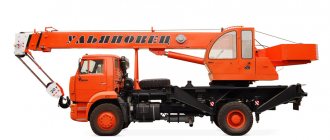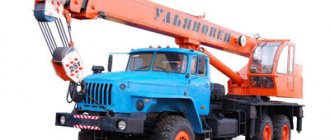KamAZ is a Russian brand of medium and heavy-duty trucks. The first car of this brand rolled off the assembly line of the plant in Naberezhnye Chelny in 1976. The range of these cars is so wide that its description can take up several gigabytes of computer memory. They are produced for the needs of the army, agriculture, as long-haul trucks and in the form of a chassis. It was this type of KamAZ that determined the almost immense breadth of its scope of application. One of them is garbage trucks based on KamAZ, which ensure the normal life of our cities.
KamAZ as a basis for a garbage truck
The municipal garbage truck on the KamAZ 4308 chassis is a rather unique piece of equipment, since, unlike other domestic brands, these vehicles have gained the greatest popularity due to their consumer qualities. Today, KamAZ 5320 is used as the basis for special equipment. The main advantages of using a KamAZ vehicle as a platform for a garbage truck:
- reliability and unpretentiousness;
- different operating modes;
- the ability to install any equipment;
- fuel efficiency;
- high productivity;
Compared to other domestic brands, KamAZ trucks have much greater potential for use. It is also easier to find the necessary spare parts and consumables for these cars, the cost of which is quite low. In addition to acceptable consumer qualities, this equipment has good maintainability, and maintenance can be performed at almost any service center specializing in truck repair.
Those that rumble in the morning: the history of Soviet garbage trucks
Not so long ago in Moscow and Leningrad, ordinary trucks removed garbage from yards and loaded it there with shovels. Having imagined this process, many may have a kind word for the current sealed, clean and almost silent machines, but their predecessors are destined to have their share of “blank spots”. Let's try to talk about some of them.
One of the most famous Soviet garbage trucks 53M on the GAZ-53A chassis
In the Soviet Union, special machines for collecting and transporting urban sewage appeared only after the Great Patriotic War. All of them were based on ordinary trucks and at first openly copied foreign designs. In the long process of catching up with work on garbage trucks, dozens of multidisciplinary enterprises built many models and introduced their classification: container ones, which transported garbage in replaceable containers, tanks or bins, and body (bunker) ones with self-unloading bodies.
The first Soviet garbage trucks
The first domestic garbage truck MS-1 on the ZIS-5 chassis was developed at the design bureau of the Moscow Improvement Administration (UBM) and assembled at an auto repair shop. Its basis is considered to be the American version on the Ford AA truck of 1932 and the SM-1 utility dump truck assembled in 1947 with a hydraulic lift.
The first Soviet garbage trucks MS-1 on a ZIS-5 truck with a lifting bucket and hydraulic drives from a dump truck. 1947
The “heart” of the garbage truck was a 300-liter bucket for collecting garbage and various waste, suspended on trailing arms at the rear of the vehicle. Using a hydraulic dump drive, it rose to the roof level and poured the contents through the top cover of the 6.5 cc body. When unloading, the body tipped back, pouring out the accumulated sewage through the back cover.
One of the first garbage trucks in the USSR was a rather complex MS-2 machine on a ZIS-150 chassis, the idea of which was first implemented in 1926 by the German company Mellmer und Schmidt. Since 1950, the Soviet version has been produced by the UBM Experimental Mechanical Plant.
At the rear of the garbage truck there was a loading hopper with a lid, behind which there was an inclined scraper conveyor with 15 steel blades, which moved the garbage along a chute to the top of the front wall of the 10-cc body. Towards the end of the journey, the mixed and compacted waste was poured into the cargo compartment. To unload, the rear wall rose up and the body tipped back. The main units were supplied with drives from a hydraulic motor with a capacity of 260 liters per minute. The car was considered too complex, heavy and expensive.
Scheme of the MS-2 garbage truck. Main units: 1 – gearbox, 6 – hydraulic pump, 9 – conveyor, 10 – receiving hopper, 15 – rear wall lift hydraulic cylinder, 17 – body lift hydraulic cylinder, 18 – side door
In 1949, at the Leningrad Mechanical Plant of the City Cleaning Trust, the production of the most unusual Soviet garbage trucks MV-10 on the ZIS-5 chassis, made under the patent of the German company Keller und Knappisch (abbreviated as KuKa), began.
The rarest Leningrad garbage truck MV-10 on a military-style ZIS-5 vehicle. 1949
Historical garbage truck MV-10 with compact tanks and auger working mechanism
In subsequent years, the MV-10 model was replaced by more powerful MV-20 and MV-30 vehicles on ZIS-150 trucks. Their main feature was a huge, slowly rotating horizontal spiral screw (auger) located inside the all-metal body, driven by the car's power take-off.
A unique garbage truck MV-20 on a ZIS-150 chassis with a spiral propeller for compacting and pushing out waste. 1956
To work with such machines, literally in every yard in Leningrad there were several conical tanks, which two people tipped into the rear receiving device, and a powerful auger moved the waste to the front wall of the body, compacting it along the way. To unload, the screw switched to reverse, pushing the contents through the rear cover of the body.
Container garbage trucks
In 1950, the Leningrad branch of the Academy of Public Utilities began developing cylindrical garbage cans that could be installed on cars in a horizontal position, rolled manually along the ground, and the empty container returned for further use. To evaluate this idea, in 1952, an experimental vehicle MKM-51 was built on a GAZ-51 chassis with nine tanks with a capacity of 500 liters, installed longitudinally in three rows of three containers each.
Such a garbage truck did not justify itself, and in subsequent years, experimental MKM-2 vehicles were created for transverse double-row placement of eight 600-liter containers. The first option with side unloading was equipped with two cross hydraulic lifts, which ensured simultaneous or separate lowering and lifting of four tanks of each row. The second lightweight option with rear unloading turned out to be the most acceptable and served as the basis for a new simple and practical machine.
Diagram of the experimental garbage truck MKM-2: 1 – transverse container, 2 – hydraulic cylinder for raising and lowering tanks on the right side of the machine, a, b, c – sequential grip positions when lifting the container
This is how the most famous “purely Leningrad garbage truck” MKM-4 appeared with rear unloading of six containers with a capacity of 500 liters, placed on two longitudinal subframes in two rows of three tanks each. The unloading and loading processes were carried out using two rear hydraulic lifts with semicircular grips for lowering individual containers to the ground or lifting empty tanks onto a vehicle.
The most famous Leningrad garbage truck MKM-4 with six tanks on a GAZ-51A car. 1959
At the end of the 50s, this garbage truck entered serial production, which was carried out by vehicle fleet No. 1 of the Spetstrans department. By the end of the 70s, it already had 750 garbage trucks, which served Leningrad residents until the 90s.
Container garbage trucks MKM-4 in the main Leningrad fleet of special equipment No. 1. 1963
Maintenance and repair of light garbage trucks MKM-4 in the first fleet of the city of Leningrad. 1974
At the same time, in Moscow, a system was used with six rectangular (cubic) 600-liter containers placed on side hinged blocks on the platform of the KMM-2M garbage truck. They were unloaded and loaded using a compact crane with a lifting capacity of 500 kilograms and a hydraulic cable drive. The production of these machines was carried out by the Oryol Loader Plant.
Moscow garbage truck KMM-2M with six cubic tanks and a crane beam on a GAZ-51A car
In the mid-50s, for the Moscow municipal economy, he assembled a batch of 25 M-8 garbage trucks of his own design on a GAZ-51A chassis.
Garbage truck M-8 with a crane beam for transporting and reloading six containers. 1956-1959
On them, in two rows, were placed six storage rectangular containers with a capacity of up to 750 liters and a central crane beam, which was used for unloading and loading both individual tanks and simultaneous tilting and overturning three containers on each side to empty garbage. For these machines, remote electrical control was used for the first time at a distance of up to 15 meters.
Eight-tank M-20 garbage truck on a GAZ-51A chassis with a cab from a UAZ-450D truck. 1958
Moscow two-ton container garbage truck M-30A with eight tanks on a GAZ-53A chassis. 1970s
In 1966, the Oryol Loader Plant began producing the most practical M-30 container garbage truck on a GAZ-53 truck. The modernized version of the M-30A with new equipment and three control posts was based on the GAZ-53A chassis, which reached a speed of 85 km/h.
A modernized M-30A machine with a hydraulic crane when reloading a rectangular container. 1978
The garbage trucks were equipped with two longitudinal tilting tubular platforms for handling eight rectangular 750-liter containers, combined into two longitudinal rows of four bins. Between them, a three-section hydraulic crane with a payload of 700 kilograms was mounted on the frame of the base vehicle, which was used for loading and unloading one container or tipping over one or both side blocks. The boom with a maximum reach of 2.7 meters was equipped with a pincer gripper, which ensured precise placement of each container. Three more enterprises were involved in the production of these machines.
Diagram of the M-30A garbage truck: 1 – hydraulic crane, 2 – container, 3 – tilting platform, 4, 5, 6 – control panels
The latest M-30A container garbage trucks in working and transport position
Body garbage trucks
In the mid-50s, a simplified MS-4 vehicle appeared on the GAZ-51A chassis, similar to an ordinary van and becoming the head of a promising generation of body (hopper) garbage trucks. In cooperation with it, it was developed by the UBM Design Bureau, and the assembly was carried out by the Moscow Automobile Repair Plant No. 6. Like on the MS-2 machine, it was equipped with a receiving hopper and an inclined feed conveyor with a chain drive, which pushed the garbage to the front wall of the body that tipped back.
Prototype of a body garbage truck OM-1 with a rear lifting wall and a tipping body
Serial body or bunker garbage truck MS-4 with a modernized conveyor on a GAZ-51A chassis. 1956
At the end of 1956, the development of the ideas embedded in the MS-2 and MS-4 vehicles became one of the simplest and most common two-ton garbage trucks, the 93M, with a closed all-metal van-type body with a volume of 4.4 cubic meters. It served to collect sewage from street garbage disposals and was based on the GAZ-51D chassis for GAZ-93A dump trucks. Its development and production was carried out by the experimental workshop of the Moscow Experimental Plant of Loading Machines, which assigned the brand M-93 to the vehicle, that is, “garbage truck”. Then, until the early seventies, it was assembled by the Oryol Loader Plant.
A prototype of the M-93 bunker machine from 1956 and its production version 93M
The main innovation that made the garbage truck a great success was the system for pressing garbage at the exit from the receiving hopper, which made it possible to significantly increase productivity. The place of the previous conveyor was taken by a powerful hydraulically driven push plate, which almost doubled the contents of the body and pushed it into the cargo compartment. The unloading process remained unchanged: the body tipped back and the bunker rose up.
The process of unloading 93M bunker garbage trucks on a GAZ-51D dump truck chassis
In 1965, the design bureau of the Moscow Special Vehicles Plant (MZSA), in collaboration with the mechanization department of the Academy of Public Utilities, created a new simple, compact and high-speed garbage truck 53M on the chassis of GAZ-53/53A series trucks.
Body garbage trucks 53M on the GAZ-53A chassis, which reached a speed of 60 km/h with a full load. 1970s
In terms of its general design and purpose, it did not differ from the 93M vehicle and was also equipped with a push plate and the same body unloading system. New items included automated mechanisms for cutting off debris, opening the rear cover and tipping the body.
The process of unloading bunker garbage trucks 53M on the GAZ-53A chassis
Serial production of the 53M machine was launched at three enterprises: the Mtsensk Municipal Engineering Plant, the Kiev Experimental Plant and the Zmiev Machine-Building Plant in the Kharkov region.
Heavy body garbage truck BM-500 on a MAZ-500A chassis for reloading household waste with compaction. 1976
Municipal garbage trucks of the recent past
Of all the Soviet-era garbage trucks described above, the long life was ensured by the most advanced bunker vehicles with closed bodies and a push plate. Brief information about them is given below.
Body garbage truck KO-413 on a GAZ-53-14 chassis with a side manipulator, a tipping mechanism and a compactor for loading solid waste from standard containers. 1987
Belarusian 180-horsepower garbage truck MAZ-5809 for collecting and transporting industrial waste with a 10-cc body and a push plate with triple compaction. 1989
Heavy garbage truck KO-415A on a KamAZ-53213 chassis with a 23-cc body, a push plate and an on-board manipulator for reloading waste from standard containers and recycling it. 1985
The title photo shows a demonstration of the M-30A garbage truck with a hydraulic crane when lifting and lowering a container with a capacity of 750 liters
Model range overview
Below are the technical characteristics of the main models of KamAZ garbage trucks with side and rear loading, produced by Ryazhsky Automobile Repair Plant OJSC.
Side loading
Technical characteristics of garbage trucks based on KamAZ with side loading:
| Model | MKM 4401 | MKM 44108 | MKM 4705 |
| Chassis | KamAZ 43255 A3 | KamAZ 43255 A3 | KamAZ 65115 |
| Wheel formula | 4x2 | 4x2 | 6x4 |
| Engine | Cummins 6ISBe210 | Cummins 6ISBe210 | KamAZ-740.62-280 |
| Power | 210 hp | 210 hp | 280 |
| Full mass | 14.3 tons | 14.3 tons | 25.2 tons |
| Body volume | 9.5 m3 | 13 m3 | 20 m3 |
| Loading weight | 5.3 tons | 4.7 tons | 12.4 tons |
| Coef. drowning | 2,5 | 5 | 4 |
| Drowning force | 14500 kgf | 25000 kgf | 23500 kgf |
| Load capacity of the manipulator | 700 kg | 700 kg | 700 kg |
Rear loading
Garbage trucks based on KamAZ with rear loading:
| Model | MKZ 4503 | MKZ 4905 | MKZ 4709 |
| Chassis | KamAZ 43253 A3 | KamAZ 53605 | KamAZ 65115 |
| Wheel formula | 4x2 | 4x2 | 6x4 |
| Engine | Cummins 6ISBe210 | Cummins 6ISBe285 | KamAZ-740.62-280 |
| Power | 210 hp | 285 hp | 280 hp |
| Full mass | 15.5 tons | 20.43 tons | 25.2 tons |
| Body volume | 9.5 m3 | 18 m3 | 20 m3 |
| Loading weight | 7.08 tons | 7 tons | 10.5 tons |
| Coef. drowning | 2,5 | 6 | 6 |
| Compaction force | 14500 kgf | 22500 kgf | 22500 kgf |
| Loading hopper | 1 m3 | 2 m3 | 2-4.8 m3 |
| Loading mechanism | No | load capacity 500 kg | load capacity 500 kg |
| Portal mechanism | No | load capacity 1500 kg | load capacity 2000 kg |
| Lifting buried containers | No | No | There is |
Used on new type container sites for separately collected waste with containers located below ground level. The KMU loader crane works with non-standard waste containers.
Description:
The KAMAZ 65117 is designed for mechanized loading, compaction and unloading of solid household waste. The special equipment includes: a body with a rear cover, a push plate, a side arm and an electrical system. Loading of waste is carried out from the container using a side manipulator. The compaction of waste in the body is carried out by a push plate. Unloading is carried out by tipping the body and a push plate.
Call our specialists and they will help you choose the best car for your needs: 8(831) 414-16-40 8-987-756-54-50
Technical characteristics of the KAMAZ 65117 garbage truck:
| CMU | Amco Veba 810 2S | |
| Load capacity at maximum reach, kg | 1130 | |
| Maximum reach, m | 7,74 | |
| Load moment, t*m | 9,60 | |
| Overall dimensions of the car, mm | length | 10600 |
| width | 2500 | |
| height | 3500 | |
| Vehicle base, mm | 4970/1320 | |
| Wheel formula | 6x4 | |
| Curb weight, kg | 15000 | |
| Total weight, kg | 25000 | |
| Weight of transported cargo, kg | 8350 | |
Technical characteristics of the Kamaz 65117 chassis:
| Model | KAMAZ 65117 (6*4) | |||
| Overall dimensions, mm | length | 9950 | ||
| width | 2500 | |||
| height | 2990 | |||
| Front overhang, mm | 1240 | |||
| Rear overhang, mm | 2420 | |||
| Wheelbase, mm | 4970 | |||
| Base between 2 and 3 wheels | 1320 | |||
| Internal platform length, mm | 7340 | |||
| Loading height, mm | 1010 | |||
| Wheel formula | 6*4 | |||
| Total weight, kg | 24000 | |||
| Axle load, kg | front | 6000 | ||
| rear trolley | 18000 | |||
| Curb weight, kg | 8350 | |||
| Axle load, kg | front | 4200 | ||
| rear trolley | 4150 | |||
| Load capacity, kg | 15500 | |||
| Permissible weight of the superstructure with cargo, kg | 15500 | |||
| Gross trailer weight, kg | 14000 | |||
| Gross weight of the road train, kg | 38000 | |||
| Engine | 740.62-280 (Euro-3) diesel | |||
| engine's type | 8 V-shaped cylinders. With turbocharging and intercooling of charge air | |||
| Working volume, l | 11,76 | |||
| Maximum net power, kW (hp) rpm. | 206 (280) at 1900 | |||
| Maximum torque, Nm (kg*cm) / rpm. | 1177 (120) at 1300 - 1350 | |||
| Cylinder diameter and piston stroke, mm | 120 / 130 | |||
| Compression ratio | 16,8 | |||
| Fuel | diesel | |||
| Environmental class | Euro-3 | |||
| Fuel tank capacity, l | 500 | |||
| Electrical equipment | Voltage, V | 24 | ||
| Batteries, V/Ah | 2×12/190 | |||
| Generator, V/W | 28/2000 | |||
| Clutch | type | diaphragm, single disk | ||
| drive unit | hydraulic with pneumatic booster | |||
| Transmission | Mechanical, 10 or 9-speed | |||
| Control | Mechanical, remote | |||
| Final drive ratio | 4.98 or 5.43 | |||
| Gear ratios | Maud. KAMAZ-154 | 1 – 7,82; 6,38 2 – 4,03; 3,29 3 – 2,5; 2,04 4 – 1,53; 1,25 5 – 1,0; 0,815 ZH – 7.38; 6.02 | ||
| Maud. ZF 9S1310 | 1 – 9.48; 2 – 6.58; 3 – 4.68; 4 – 3.48; 5 – 2.62; 6 – 1.89; 7 – 1.35; 8 – 1.00; 9 – 0.75; ZH – 8.97 | |||
| Brakes | front | disk | ||
| rear | disk | |||
| Brake drive | pneumatic | |||
| Dimensions: drum diameter, mm | 400 | |||
| Brake lining width, mm | 140 | |||
| Total area of brake linings, cm2 | 6300 | |||
| Wheel type | disk | |||
| Tire type | pneumatic, chamber | |||
| Rim size | 7,5-20 (190-508) | |||
| Tires, size | 11.00 R20 (300 R508) | |||
| Cabin | type | located above the engine, with a high roof | ||
| execution | D (long with sleeping place) | |||
| Characteristics of a vehicle with a gross weight of 25200 kg | Maximum speed, not less, km/h | 100 | ||
| Climbing angle, not less, % | 25 | |||
| External overall turning radius, m | 10,7 | |||
Features of using KamAZ KO-440 7
The domestic KamAZ ko 440 7 garbage truck can be used in different climatic conditions, regardless of temperature and weather. The range of operating temperatures varies from -50 to +60 degrees, while cars can be equipped with the appropriate devices: for summer, blowing and air conditioning systems, for winter - additional interior heaters, fuel pre-heaters, high-power fuel pumps, etc.
KamAZ KO-440 7 is used as a garbage truck, both in urban conditions and outside the city.
In different versions, the car is equipped with different types of tires - with a smooth tread, for off-road - with a herringbone pattern.
The advantage of the KamAZ 4308 chassis
The placement of a garbage container with the necessary equipment on the KamAZ 4308 chassis is due to the fact that the frame design (in this version shortened by 1 axle) ensures good vehicle dynamics, namely maneuverability in urban driving conditions. In addition, the fuel consumption of a KamAZ garbage truck based on 4308 is much less than that of full-fledged long versions. Savings were achieved by reducing the overall weight of the machine and changing gear ratios in mechanical components. Also, the advantage of using this frame is that due to its lighter weight, the machines have access to movement along inter-block roads and residential areas, which significantly improves the performance of this equipment.
Features of Side Loading Garbage Truck
KamAZ garbage truck equipment, the price of which is quite low compared to foreign analogues, has a device for side loading of garbage, which is powered by two hydraulic cylinders. This arrangement of the working body is due to the fact that, due to its small, short wheelbase, the vehicle has a slightly lower carrying capacity, so the installation of a front dumper for garbage cans is not intended. In addition to the design features, the side position of the “paw” allows you to more conveniently cope with the assigned tasks, without blocking the roadway for other road users.
Specifications
The KamAZ special utility vehicle, a garbage truck, has technical characteristics that are on par with many highly productive vehicles, and has equipment that is familiar to all KamAZ vehicles.
Characteristics of a garbage truck based on KamAZ 4308:
- power unit - KamAZ, diesel, V8 with distributed injection, volume 11 liters, power 134 kW;
- transmission – manual gearbox, 5-speed with synchronizers and hydraulic booster;
- suspension type – front – beam type, leaf spring, rear – pavement with twin springs;
- paw load capacity – 500 kg;
- The capacity of the garbage container is 11 cubic meters. meters;
- weight of special equipment – 2300 kg;
- gross vehicle weight – 11,500 kg;
- waste compaction – from 1 to 4;
- overall dimensions – 6700 mm x 2500 mm x 3400 mm;
- additional equipment - an additional tank of 200 liters, technical lighting, interior heating.
Each car can be equipped with an individual type of equipment, with different performance. Basically, the most popular is the “claw” with special grips, designed for lifting standard garbage cans in the amount of 1 piece. for 1 manipulation. Additional equipment can be expanded with various technical devices, in particular bright lighting, which is activated when working with the paw in the dark.
Getting to know the new garbage trucks at the WasteTech exhibition in Moscow
Garbage removal is a profitable business. That’s why more and more companies are promoting garbage trucks in our market. And if the exposition of the STT construction exhibition is decreasing in size every year, then at the WasteTech show in the neighboring pavilion there was nowhere for the apple to fall due to the many new garbage trucks.
MAN with 8x4 wheel arrangement and Geesink Norba body
The main attraction was the four-axle Geesink Norba garbage truck on a MAN chassis. This 400-horsepower giant is designed to remove waste from areas of multi-storey new buildings in the Moscow region, of which there are more and more.
Gray body color is a distinctive feature of garbage trucks for the Moscow region
And although it can carry a lot of waste (the volume of the body is 28 cubic meters, and the compression ratio is seven), maneuvering in narrow courtyards crowded with cars on such a giant will be a difficult task for its driver. At the same time, the device costs as much as 245 thousand euros, or about 17.5 million rubles.
The body of this MAN garbage truck is made in the USA
There was another MAN garbage truck at the exhibition - only smaller and with a superstructure from the American company McNeilus. The 14-cc body was indeed manufactured overseas, but it was mounted on a TGM chassis with a 250-horsepower engine at the Special Equipment Plant in the city of Mtsensk, Oryol region. The 16 cc rear-loading superstructure is equipped with a lifting device for tanks weighing up to 680 kg. The hopper floor is made of AR200 alloy steel, and the pressing ratio is 6.1. Such a garbage truck costs about 11 million rubles, but if you install the superstructure on a domestic chassis (KAMAZ or MAZ), the price will drop to eight million.
This Farid body garbage truck can handle containers up to 1100 liters in volume
And here is a car with an Italian Farid body with a volume of 16 cubic meters with rear loading, which is installed on an IVECO-AMT Eurocargo chassis with a 280-horsepower engine. The total weight of this garbage truck is 21 tons, and the compaction ratio is six. The superstructure is installed on the chassis by Kominvest-AKMT. A similar vehicle on an IVECO chassis costs 11 million rubles (about eight million on a KAMAZ chassis).
Even on a KAMAZ chassis, the Italian Mazzocchia body looks neat and even elegant
Another Italian superstructure was already on the KAMAZ chassis. This body was built by Mazzocchia, and installed on the chassis by the Moscow company ISP Group. The flat body has a volume of 16 cubic meters, and the debris inside can be compacted six times. The lifting mechanism for containers is designed for a ton of load, and the total weight of a loaded garbage truck is 18 tons. KAMAZ costs nine million rubles - more expensive than analogues with the same European bodies.
The body of the Latvian garbage truck is made of S355 steel, and its loading hopper is made of Hardox steel
The MTM ing company from Latvia also continues to promote its garbage trucks on the Russian market. At one time, we talked in detail about their garbage truck on the Isuzu NQR chassis, and at the exhibition there was a larger vehicle built on a heavy 18-ton Isuzu Forward chassis with a 260-horsepower engine. The volume of the body is 16 cubic meters, and the maximum compression ratio (which can be adjusted here) is six. This garbage truck costs 11 million rubles.
This small bunker truck can be driven with a category B license
There is another Isuzu nearby for waste removal - only a small one. This multi-lift for bunker containers was built by AutoSystems. The 3.5-tonne ELF short chassis houses a HYVA hook loader with a lifting capacity of three tonnes, which can be controlled from a remote control in the cab. The price of such a “crumb” is 3.3 million rubles.
KAMAZ with a Turkish Kalmerciler body is simple and cheap
A couple more garbage trucks are at the stand of the Turkish superstructure manufacturer Katmerciler. They are mounted on the chassis by the Vladimir KAMAZ dealer. The add-ons are simple in design, but the main advantage is the price!
This Canter is designed for narrow yards, where a large garbage truck would be cramped
Thus, a large garbage truck on a Kamaz chassis with an 18-cc body with a total weight of 19 tons and a six-fold compaction ratio costs just under six million rubles. And a small-class garbage truck on a nine-ton Fuso Canter chassis with an eight-cc body is less than five million.
The body of the Moskommash garbage truck with stiffening ribs no longer looks modern
Domestic manufacturers were represented by the Moskommash company, which brought to the exhibition a garbage truck on a Belarusian MAZ chassis with an 18-cc body. With stiffening ribs, it looks, of course, rougher than its foreign smooth-walled counterparts. However, the receiving hopper here is made of Hardox steel, the hydraulic systems are made in Italy, and the pressing ratio is seven. As well as the price - about seven million rubles.
This MAZ can not only load garbage, but also wash containers after itself.
There was also an interesting combined vehicle on a Mazov chassis at the exhibition. This garbage truck, built by Hidro-Mak, can not only haul trash in a 12-cubic-foot body with a compaction ratio of six, but it can also wash containers.
Pressurized water is supplied through a nozzle directly to the container
For this purpose, a 1,550-liter water tank is installed behind the cabin, and a special sprayer with high-pressure nozzles is installed in the rear of the body. Moreover, the design is made in such a way that dirty water is also collected in a separate tank, the volume of which is 950 liters. They are asking a little more than eight million rubles for such a transformer.
This is not a garbage truck, but a machine for washing and disinfecting containers
Well, the last device in our review does not know how to remove garbage - it is a hook loader on an IVECO Eurocargo chassis with a module for washing containers. The device was developed by the St. Petersburg manufacturer of fire trucks, the Chibis company. Inside the body there is a stainless steel tank with a volume of 12 thousand liters, divided into two equal sections - for clean and dirty water, respectively. There is also a 200-liter container for disinfectant.
The module with the washing unit is removable
For washing, the container is fixed at the rear, where six special nozzles spray it with water under pressure. One container requires an average of 70 liters of water and a couple of minutes of time. The installation can operate at temperatures above five degrees, and together with the chassis it costs 15 million rubles.











